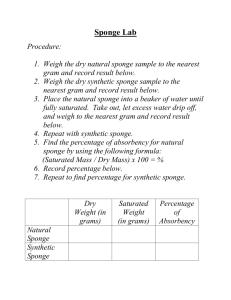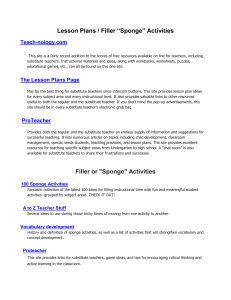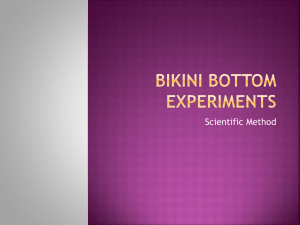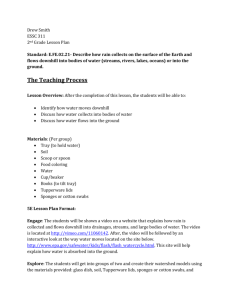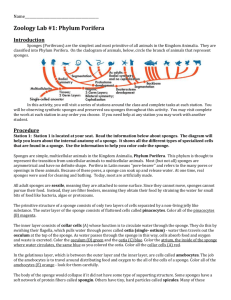Phylum Porifera - Blue Skies Academy
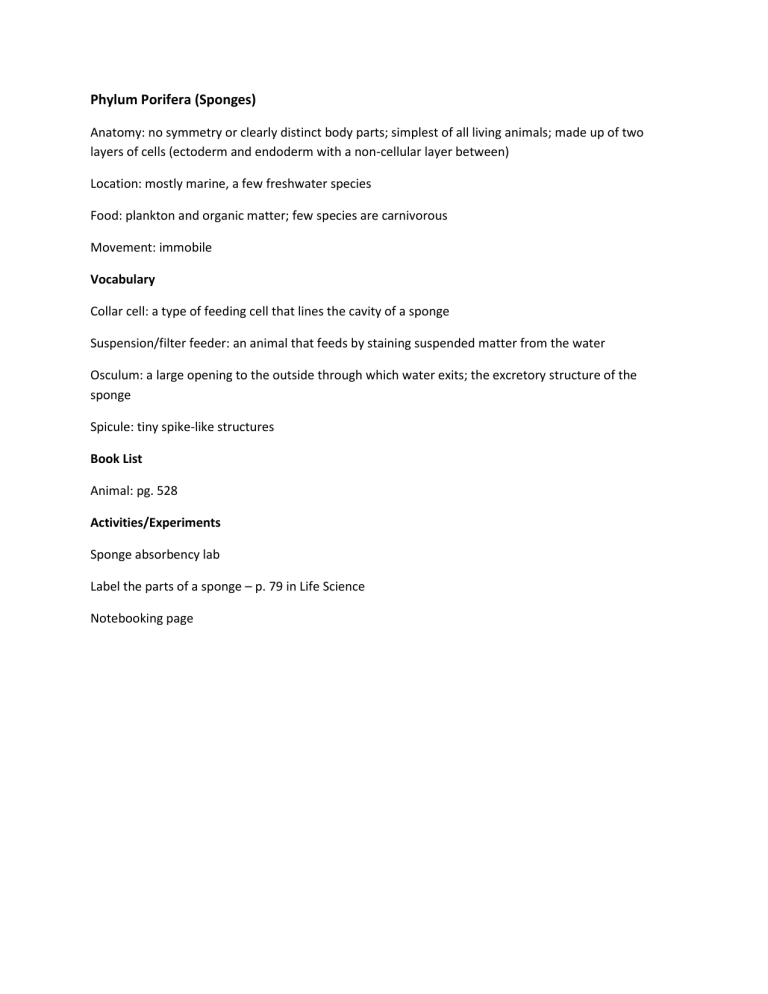
Phylum Porifera (Sponges)
Anatomy: no symmetry or clearly distinct body parts; simplest of all living animals; made up of two layers of cells (ectoderm and endoderm with a non-cellular layer between)
Location: mostly marine, a few freshwater species
Food: plankton and organic matter; few species are carnivorous
Movement: immobile
Vocabulary
Collar cell: a type of feeding cell that lines the cavity of a sponge
Suspension/filter feeder: an animal that feeds by staining suspended matter from the water
Osculum: a large opening to the outside through which water exits; the excretory structure of the sponge
Spicule: tiny spike-like structures
Book List
Animal: pg. 528
Activities/Experiments
Sponge absorbency lab
Label the parts of a sponge – p. 79 in Life Science
Notebooking page
Phylum Porifera
Habitat:____________________________________________________________
What do they eat:____________________________________________________
How do they eat:_____________________________________________________
Size:_______________________________________________________________
Movement:_________________________________________________________
Other:_____________________________________________________________
___________________________________________________________________
Sponge Absorbency Lab
Purpose: To determine which type of sponge (natural or synthetic) will hold more water and/or soapy water.
Materials:
Several pieces of natural sponge and synthetic sponge (these should be essentially the same size)
Scale
Water
Measuring cup/container
Dish Soap
Hypothesis:
Which sponge do you think will hold more water? Why?
Which sponge do you think will hold more soapy water? Why?
Methods/Procedures:
Part I
1.
Weigh the natural sponge and record its mass: _________________
2.
Weigh the synthetic sponge and record its mass: _________________
3.
Add 100 mL (or 0.5 cups) of water to 2 different containers.
4.
Add one type of sponge to each container and allow them to become fully saturated (wait a few minutes).
5.
Gently remove the sponges while letting excess water drip back into the beaker.
6.
Weigh the natural sponge and record its mass: _____________
7.
Weigh the synthetic sponge and record its mass: _____________
Part II
1.
Weigh the natural sponge and record its mass: _____________
2.
Weigh the synthetic sponge and record its mass: _____________
3.
Add 100 mL of water to 2 different containers.
4.
Add the same amount of dish soap to each container. Record the amount added:
5.
Dissolve the soap thoroughly and then add one type of sponge to each container and allow them to become fully saturated (wait a few minutes).
6.
Gently remove the sponges while letting excess water drip back into the container.
7.
Weigh the natural sponge and record its mass: ___________
8.
Weigh the synthetic sponge and record its mass: ___________
Results/Analysis:
Part I
Subtract the dry sponge mass from the wet sponge mass and record it.
Natural sponge: ___________
Part II
Synthetic sponge: ___________
Perform the same calculations that you did for Part I using the data for the soapy water experiment.
Conclusions
Which sponge was better able to absorb water?
Why do you think that there is a difference in absorbency?
Which sponge would you use while cleaning your house? Why?
